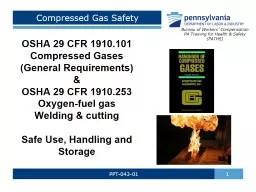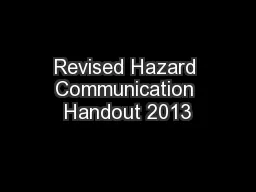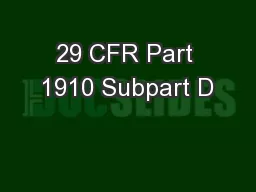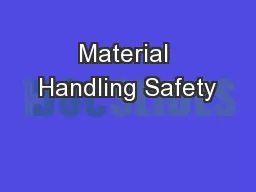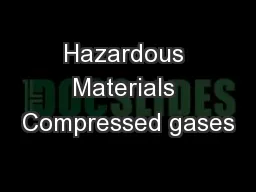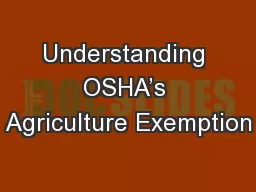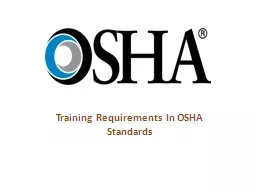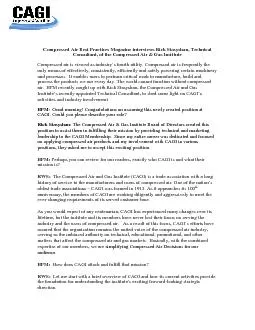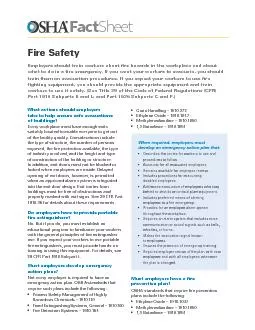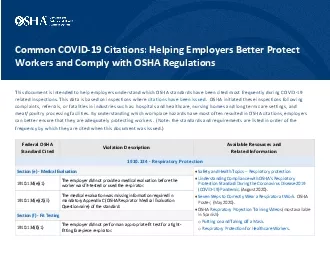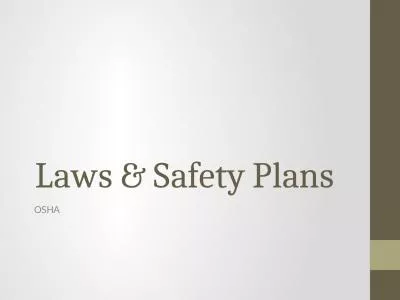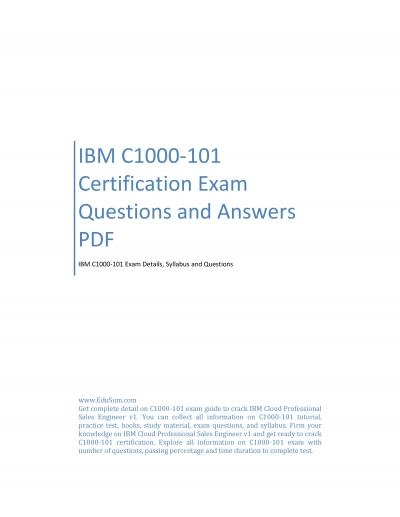PPT-Compressed Gas Safety OSHA 29 CFR 1910.101
Author : kittie-lecroy | Published Date : 2020-04-04
Compressed Gases General Requirements amp OSHA 29 CFR 1910253 Oxygenfuel gas Welding amp cutting Safe Use Handling and Storage PPT04301 1 Bureau of Workers Compensation
Presentation Embed Code
Download Presentation
Download Presentation The PPT/PDF document " Compressed Gas Safety OSHA 29 CFR 1910...." is the property of its rightful owner. Permission is granted to download and print the materials on this website for personal, non-commercial use only, and to display it on your personal computer provided you do not modify the materials and that you retain all copyright notices contained in the materials. By downloading content from our website, you accept the terms of this agreement.
Compressed Gas Safety OSHA 29 CFR 1910.101: Transcript
Download Rules Of Document
" Compressed Gas Safety OSHA 29 CFR 1910.101"The content belongs to its owner. You may download and print it for personal use, without modification, and keep all copyright notices. By downloading, you agree to these terms.
Related Documents

